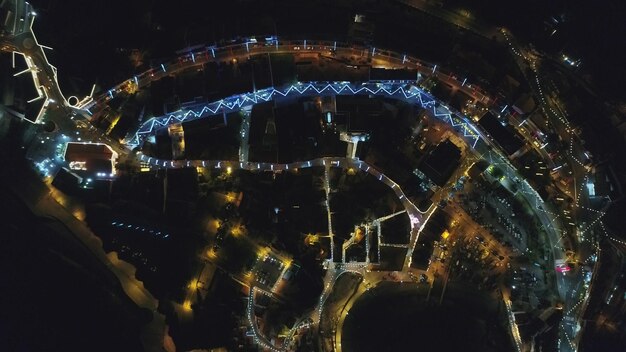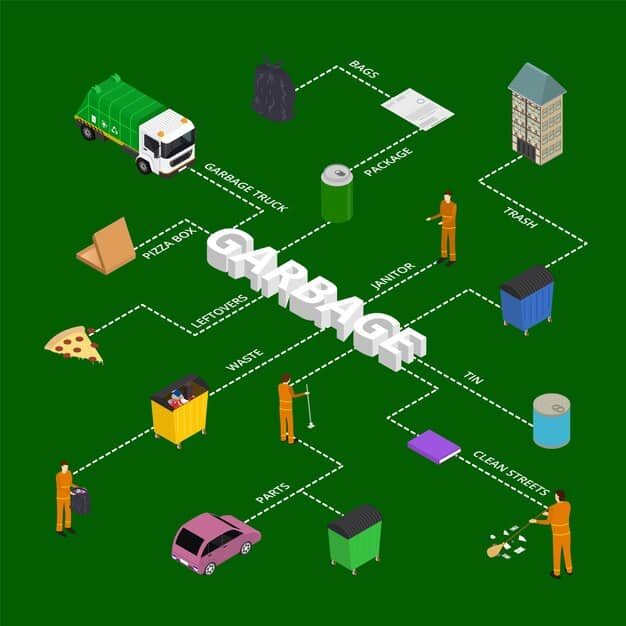US Tech Startups: IoT’s Role in Smart Cities by 2026?

US tech startups can significantly leverage IoT for smart city solutions by 2026 by focusing on data-driven urban planning, efficient resource management, sophisticated infrastructure monitoring, and enhanced public safety, fostering innovation through strategic partnerships and precise niche targeting within this rapidly evolving sector.
The urban landscape is undergoing a profound transformation, driven by an accelerating confluence of technology and civic aspiration. From optimizing traffic flow to enhancing public safety, cities are increasingly looking to innovative solutions to address complex challenges. A pivotal technology in this evolution is the Internet of Things (IoT), and as we approach 2026, the question of How Can US Tech Startups Utilize IoT for Smart City Solutions by 2026? becomes not just pertinent, but critical for both technological advancement and urban development.
Understanding the Smart City Ecosystem and IoT’s Core Role
The concept of a “smart city” transcends mere technological integration; it embodies an urban environment where interconnected systems and data analytics work synergistically to improve livability, sustainability, and economic vibrancy. At its heart, the Internet of Things (IoT) provides the sensory nervous system for these urban organisms, gathering vast amounts of real-time data from diverse sources. This data, once collected, becomes the fuel for intelligent decision-making, enabling cities to respond dynamically to changing conditions and anticipate future needs. The rapid proliferation of IoT devices, ranging from environmental sensors to connected vehicles, is laying the groundwork for unprecedented levels of urban insight and control.
The Foundational Pillars of Smart City Development
For US tech startups aiming to carve out a niche in this burgeoning market, understanding the foundational pillars of smart city development is paramount. These pillars vary but generally include areas like intelligent transportation, efficient energy management, public safety, waste management, and environmental monitoring. Each pillar presents unique challenges and opportunities for IoT innovation, demanding tailored solutions that address specific urban pain points.
- Intelligent Transportation Systems (ITS): Utilizing IoT for real-time traffic monitoring, smart parking solutions, and connected vehicle infrastructure to reduce congestion and emissions.
- Sustainable Energy Management: Deploying smart grids, intelligent street lighting, and building automation systems to optimize energy consumption and promote renewable sources.
- Enhanced Public Safety: Integrating IoT sensors with surveillance systems, gunshot detection, and emergency response platforms to improve citizen well-being.
- Efficient Waste Management: Implementing smart bins and optimized collection routes based on fill levels, reducing operational costs and environmental impact.
Moreover, the integration of IoT within these pillars allows for a holistic approach to urban management. For instance, data from smart traffic sensors can inform urban planners about areas needing better public transport, while air quality sensors can highlight environmental hotspots requiring intervention. This interconnectedness is where the true value of IoT in smart cities lies, providing a comprehensive data canvas upon which smarter decisions can be painted.
The role of US tech startups here is to identify these intersections and develop highly specialized, yet scalable, solutions. This requires not only technical prowess in IoT, data analytics, and cloud computing but also a deep understanding of urban planning, municipal operations, and public policy. The smart city ecosystem is inherently multidisciplinary, demanding a collaborative approach that leverages diverse expertise.
Key Opportunities for IoT Innovation by 2026
As we look towards 2026, several key opportunities for IoT innovation within smart cities are emerging, driven by technological advancements, evolving urban needs, and increasing public acceptance. Startups that position themselves strategically within these areas are likely to see significant growth and impact. The fusion of AI with IoT, for example, is creating more sophisticated analytical capabilities, transforming raw data into actionable intelligence.
Advanced Data Analytics and AI Integration
The sheer volume of data generated by IoT devices necessitates advanced analytical capabilities. US tech startups can capitalize on this by developing platforms that not only collect but also process, analyze, and visualize complex urban data. This includes predictive analytics for traffic patterns, anomaly detection for infrastructure maintenance, and even sentiment analysis from public feedback captured through various urban smart devices. The integration of Artificial Intelligence (AI) and Machine Learning (ML) transforms this data from descriptive to prescriptive, allowing cities to anticipate problems and implement solutions proactively.
For instance, an IoT-enabled smart city might use AI to predict areas prone to flooding based on real-time weather data and historical drainage patterns, allowing for pre-emptive measures. Similarly, ML algorithms can optimize public transport routes in real-time, adapting to unexpected events or demand fluctuations. Startups focusing on these AI/ML-driven analytics platforms, especially those offering user-friendly interfaces for city planners and officials, will find a receptive market.
Edge Computing for Real-time Decision Making
Given the low-latency requirements of many smart city applications—such as autonomous vehicles or emergency response systems—edge computing is becoming increasingly vital. US tech startups can develop IoT solutions that process data closer to the source, reducing reliance on centralized cloud infrastructure and enabling faster, more efficient responses. This is particularly crucial for critical applications where even milliseconds of delay can have significant consequences. Edge computing also enhances data privacy and security by minimizing data transfer.
- Autonomous Vehicle Support: Edge processing enables real-time decision-making for self-driving cars, critical for collision avoidance and navigation.
- Critical Infrastructure Monitoring: Immediate anomaly detection in power grids or water systems through edge devices prevents widespread failures.
- Public Safety Applications: Rapid analysis of surveillance data for immediate threat detection without sending all footage to the cloud.
By offering edge-enabled IoT solutions, startups can provide tangible benefits to cities, including reduced bandwidth costs, improved data security, and increased system responsiveness. This technological shift represents a significant opportunity for startups specializing in distributed computing architectures and low-latency processing.
Cybersecurity and Data Privacy Solutions
As smart cities become more interconnected, the attack surface for cyber threats expands exponentially. Data privacy concerns also escalate with the collection of vast amounts of citizen data. US tech startups can play a crucial role in developing robust cybersecurity frameworks and privacy-by-design solutions for IoT devices and networks. This includes end-to-end encryption, secure authentication protocols, and anonymization techniques for sensitive data. Trust in smart city technologies hinges on their security and privacy assurances.
A successful smart city implementation cannot exist without a strong foundation of trust and security. Cities are increasingly wary of potential vulnerabilities and are demanding solutions that adhere to the highest standards of data protection. This opens up a significant market for startups specializing in IoT security, offering services like vulnerability assessments, secure device provisioning, and continuous monitoring. Demonstrating a clear commitment to security and privacy will be a distinct competitive advantage.
The opportunities for IoT innovation by 2026 are not limited to these areas but represent significant growth vectors. Startups that can effectively combine advanced analytics, edge computing, and robust cybersecurity measures will be well-positioned to contribute meaningfully to the evolution of smart cities, offering solutions that are not only technologically sophisticated but also reliable, secure, and respectful of citizen privacy.

Challenges and Strategic Considerations for Startups
While the opportunities in the smart city sector are vast, US tech startups must navigate a complex landscape fraught with challenges. Understanding these hurdles and developing robust strategies to overcome them will be critical for success. The smart city market is distinct from traditional consumer or enterprise markets, requiring a different approach to sales, project management, and government relations.
Navigating Public Procurement and Funding
A significant barrier for many startups is the public procurement process, which can be notoriously slow, bureaucratic, and highly regulated. Cities often operate on multi-year budget cycles, and securing funding for innovative projects can be a lengthy endeavor. Startups need to develop strategies for engaging with city officials early, demonstrating tangible value, and aligning their solutions with existing urban development plans and funding initiatives. Patience and persistence are key.
Furthermore, funding for smart city projects can come from diverse sources, including federal grants, municipal bonds, public-private partnerships (PPPs), and even philanthropic organizations. Startups should explore these various avenues and be adept at crafting proposals that resonate with the priorities of different funding bodies. Highlighting the long-term cost savings, environmental benefits, and improvements in citizen quality of life can help justify initial investments.
Interoperability and Standardization
Smart cities involve a multitude of disparate systems and sensors from various vendors. Ensuring these systems can communicate and interact seamlessly (interoperability) is a major challenge. Lack of standardization can lead to siloed data and inefficient operations. US tech startups should prioritize developing solutions that are open and adhere to industry standards, or even better, contribute to the development of new standards. This approach increases their market desirability and mitigates integration headaches for cities.
Building solutions with open APIs and flexible architectures will be crucial for facilitating integration with legacy systems and future innovations. Cities are increasingly looking for modular, scalable solutions that can evolve with their needs rather than proprietary, closed systems that lock them into a single vendor. Startups demonstrating a commitment to open ecosystems will gain a competitive edge.
Building Trust and Addressing Public Concerns
The successful implementation of smart city solutions hinges on public acceptance, which can be fragile, especially concerning data privacy and surveillance. Startups must prioritize transparency in their data collection and usage practices, clearly communicating the benefits to citizens while addressing potential ethical and privacy concerns. Engaging with communities, conducting pilot programs, and demonstrating measurable positive impacts are vital for building trust.
- Transparent Data Policies: Clearly outline what data is collected, how it’s used, and who has access to it.
- Community Engagement: Involve citizens in the design and implementation phases of smart city projects.
- Demonstrable Benefits: Publicize the real-world improvements in quality of life, efficiency, and sustainability.
Without public buy-in, even the most technologically advanced solutions risk failure. Startups should view public engagement as an integral part of their development and deployment strategy, emphasizing collaboration and co-creation rather than top-down implementation. Education and continuous dialogue are essential for fostering a positive perception of smart city initiatives.
Overcoming these challenges requires not only technological prowess but also strong business acumen, a deep understanding of the public sector, and a commitment to ethical innovation. Startups that can strategically address these areas will be better positioned to thrive in the competitive but rewarding smart city market.
Strategic Partnerships and Ecosystem Collaboration
The complex, multidisciplinary nature of smart city development necessitates a collaborative approach. For US tech startups, forging strategic partnerships and actively participating in the broader smart city ecosystem will be paramount to scaling operations, gaining market access, and delivering comprehensive solutions. No single entity possesses all the necessary expertise or resources to build a truly smart city.
Collaborating with Established Tech Giants
While startups bring agility and specialized innovation, established tech giants often possess the scale, infrastructure, and financial resources that cities require for large-scale deployments. Partnerships with companies like IBM, Cisco, Siemens, or Google can provide startups with invaluable market reach, credibility, and access to broader solution portfolios. These collaborations can range from technology integration agreements to co-development initiatives, leveraging the startup’s niche expertise within a larger framework.
For example, a startup specializing in AI-powered traffic prediction might integrate its algorithms into a major tech firm’s smart transportation platform. This allows the startup to gain immediate access to a wider customer base and deployment channels, while the larger company enhances its offering with cutting-edge capabilities. Such symbiotic relationships are increasingly common and beneficial in the smart city space.
Engaging with Municipalities and Urban Planning Bodies
Direct engagement with city governments, urban planning departments, and municipal agencies is crucial. These entities are the end-users and decision-makers for smart city projects. Startups should actively participate in city-led innovation challenges, pilot programs, and requests for proposals (RFPs). Building direct relationships with city officials provides invaluable insights into their specific needs, budgetary constraints, and long-term visions, allowing startups to tailor their solutions more effectively.
- Pilot Programs: Offer small-scale, demonstrable projects to showcase technology effectiveness and build trust.
- Workshops and Consultations: Provide expertise and collaborate on identifying key urban challenges.
- Active Participation in Forums: Attend and contribute to smart city conferences and municipal technology events.
Understanding the unique political and social dynamics of each city is also important, as smart city solutions must be culturally and practically relevant to their specific environments. This requires a nuanced approach and a willingness to adapt solutions to local contexts.
Academic and Research Institutions
Universities and research institutions are often at the forefront of fundamental research in IoT, AI, and urban systems. Partnerships with these institutions can provide startups with access to cutting-edge research, talent pipelines (e.g., interns, graduate students), and specialized testing facilities. Collaborative research projects can lead to breakthrough innovations that differentiate a startup’s offerings in the market.
These partnerships can also help validate new technologies through rigorous academic testing and peer review, adding scientific credibility to a startup’s claims. For cities, collaborations with academic institutions often provide an independent, expert opinion on the feasibility and impact of proposed smart city solutions, further enhancing public trust and informing policy decisions.
Ecosystem collaboration allows startups to accelerate their growth, mitigate risks, and contribute to more comprehensive and impactful smart city solutions. By strategically partnering across commercial, governmental, and academic sectors, US tech startups can significantly enhance their ability to utilize IoT for smart city development by 2026, creating a synergistic environment for urban innovation.
Funding and Investment Landscape for Smart City Startups
Securing adequate funding is a critical factor for any startup, and those operating in the smart city sector face unique considerations given the long sales cycles and capital-intensive nature of some IoT deployments. However, the rapidly growing interest in urban innovation is attracting significant investment, creating a dynamic funding landscape for US tech startups.
Venture Capital and Corporate Venture Arms
Venture Capital (VC) firms are increasingly allocating funds to smart city technologies, recognizing the substantial market potential. Startups focusing on scalable IoT platforms, AI-driven analytics, and cybersecurity solutions are particularly attractive to VCs looking for high-growth opportunities. Additionally, many large corporations involved in infrastructure, energy, and technology have dedicated corporate venture arms that invest in promising smart city startups, often with a view towards strategic partnerships or acquisitions.
When seeking VC funding, startups need to clearly articulate their unique value proposition, demonstrate a viable business model (even if early in revenue generation), and present a clear path to scalability. Showing existing pilot projects or strong city interest can significantly enhance their appeal to investors, as it de-risks the municipal sales cycle to some extent.
Government Grants and Public-Private Partnerships (PPPs)
Federal, state, and local governments are offering various grants and funding initiatives to promote smart city development. Programs from agencies like the Department of Transportation, Department of Energy, and the National Science Foundation often include provisions for innovative technologies, including IoT. Startups should actively monitor these funding opportunities and be proficient in navigating the grant application process, which can be complex but lucrative.
Public-Private Partnerships (PPPs) are another significant funding mechanism for smart city projects. In a PPP, a city collaborates with private entities (including startups) to finance, build, and operate smart infrastructure. These arrangements can provide patient capital and long-term contracts, which are highly beneficial for startups with solutions requiring significant upfront investment or longer payback periods. Understanding the intricacies of PPPs and how to structure successful partnerships is a key capability for startups in this space.
Impact Investing and Sustainable Funds
Beyond traditional venture capital, a growing category of impact investors and sustainable funds are specifically looking to deploy capital into companies that generate positive social and environmental outcomes alongside financial returns. Smart city solutions that address climate change, improve public health, enhance social equity, or reduce resource consumption align well with the mandates of these funds. This can provide an alternative source of capital for startups whose mission deeply integrates with broader societal benefits.
- ESG Alignment: Highlight how solutions contribute to Environmental, Social, and Governance goals.
- Measurable Impact: Provide clear metrics on the positive outcomes of technology deployments.
- Mission-Driven Approach: Emphasize the long-term societal vision alongside financial goals.
The diverse funding landscape means that US tech startups leveraging IoT for smart city solutions have multiple avenues to secure the capital needed for growth and innovation. By strategically aligning with the right investors and funding programs, they can accelerate development, refine their offerings, and expand their presence in the burgeoning smart city market by 2026.
Future Trends and Niche Specialization by 2026
As the smart city landscape matures, the focus for US tech startups will increasingly shift towards highly specialized solutions and the integration of emerging technologies. By 2026, success will likely favor those who can anticipate next-generation urban needs and develop sophisticated, targeted IoT applications that address them.
Hyper-Personalized Urban Services
Beyond broad city-wide solutions, there will be a growing demand for hyper-personalized urban services. This includes IoT applications that cater to individual citizen needs, such as personalized public transport information, localized environmental alerts (e.g., pollen counts, noise levels in specific neighborhoods), or tailored recommendations for urban amenities. Startups can innovate by developing platforms that aggregate various data streams to offer a more bespoke urban experience, moving beyond one-size-fits-all solutions.
This trend will require sophisticated data processing and privacy-preserving techniques to deliver personalized insights without compromising individual data. The focus will be on consent-driven data usage, where citizens actively opt-in to receive tailored information and services. Solutions enabling real-time, dynamic adaptation of urban resources to individual or small group needs will be highly valued.
Digital Twins and Predictive Urban Modeling
The concept of “digital twins”—virtual replicas of physical assets, processes, or systems—is gaining traction in urban planning. By 2026, IoT data will increasingly feed into sophisticated digital twins of entire city districts or critical infrastructure. These digital models allow urban planners to simulate various scenarios, predict the impact of new developments, and optimize resource allocation before physical implementation. Startups can specialize in developing the software platforms and integration layers necessary to build and maintain these complex digital twins.
The true power of digital twins lies in their ability to enable predictive urban modeling, helping cities anticipate and proactively address challenges ranging from climate change impacts to population growth. This area presents a significant opportunity for startups with expertise in advanced simulation, data visualization, and large-scale data integration, moving beyond descriptive analytics to prescriptive urban foresight.
IoT for Climate Resilience and Green Infrastructure
With increasing awareness of climate change, cities are investing heavily in climate resilience and green infrastructure. IoT can play a pivotal role here, offering solutions for real-time monitoring of water levels, soil moisture, urban heat islands, and air quality to inform adaptation strategies. Startups can develop IoT sensors and platforms specifically designed for environmental monitoring, smart irrigation systems for urban parks, or solutions for optimizing energy consumption in buildings to reduce carbon footprints.
This niche not only aligns with global sustainability goals but also responds to a pressing need for cities to become more resilient to extreme weather events and environmental degradation. Solutions that provide measurable environmental benefits, help reduce operational costs for green initiatives, and contribute to a healthier urban environment will find a strong market. The integration of IoT with renewable energy sources and sustainable building practices represents a particularly fruitful area for innovation and growth by 2026.
These future trends indicate a shift towards more intelligent, resilient, and human-centric smart cities. For US tech startups, success hinges on identifying these evolving needs and specializing in unique IoT applications that are both technologically advanced and deeply relevant to the future of urban living, securing their role in shaping the smart cities of tomorrow.

| Key Area | Brief Description |
|---|---|
| 🚦 Smart Mobility | IoT optimizes traffic flow, parking, and public transit, reducing congestion and emissions. |
| 💡 Resource Efficiency | Intelligent grids and waste systems enhance energy, water, and waste management. |
| 🛡️ Public Safety & Health | IoT improves emergency response, air quality monitoring, and overall urban safety. |
| 🤝 Strategic Alliances | Partnerships with cities and companies accelerate market entry and solution deployment. |
Frequently Asked Questions about IoT in Smart Cities
IoT provides smart cities with enhanced efficiency in resource management, improved public safety through real-time monitoring, optimized transportation systems, and better environmental sustainability. It enables data-driven decisions that lead to more responsive and livable urban environments, benefiting citizens daily through various interconnected services and infrastructure enhancements.
Startups encounter hurdles like lengthy government procurement processes, ensuring interoperability between diverse systems, and addressing public concerns about data privacy and security. Additionally, securing sufficient funding and navigating complex regulatory landscapes are significant challenges that require strategic planning and often collaborative approaches with city administrations.
Data analytics is critically important as it transforms raw IoT data into actionable insights for urban planners and city officials. It enables predictive maintenance, optimizes resource allocation, identifies patterns for crime prevention, and supports real-time decision-making. The integration of AI and machine learning further enhances these capabilities, moving from reactive responses to proactive city management.
Public-private partnerships (PPPs) are crucial in smart city development, allowing cities to leverage private sector innovation, expertise, and capital without incurring sole financial risk. For startups, PPPs offer opportunities for long-term contracts, access to significant projects, and shared responsibilities, accelerating the deployment and scaling of IoT solutions that might otherwise be cost-prohibitive for municipalities alone.
By 2026, prominent IoT niches will likely include hyper-personalized urban services, advanced digital twins for predictive urban modeling, and specialized IoT solutions for climate resilience and green infrastructure. These areas address evolving urban needs for efficiency, sustainability, and citizen well-being, offering significant growth potential for innovative US tech startups.
Conclusion
The trajectory for US tech startups harnessing IoT for smart city solutions by 2026 is one of immense potential, tempered by the need for strategic foresight and collaborative execution. From optimizing urban mobility and resource management to enhancing public safety and fostering environmental resilience, IoT offers a foundational technology to build smarter, more responsive cities. Success, however, demands more than just technological prowess; it requires navigating complex public procurement, prioritizing interoperability, and building enduring trust with citizens. By embracing advanced data analytics, edge computing, robust cybersecurity, and forging strategic partnerships across government, industry, and academia, startups can overcome these challenges. The future urban landscape will be shaped by those who not only innovate with IoT but also understand the intricate ecosystem of urban governance and community needs, truly transforming cities into intelligent, sustainable, and livable spaces for all.





